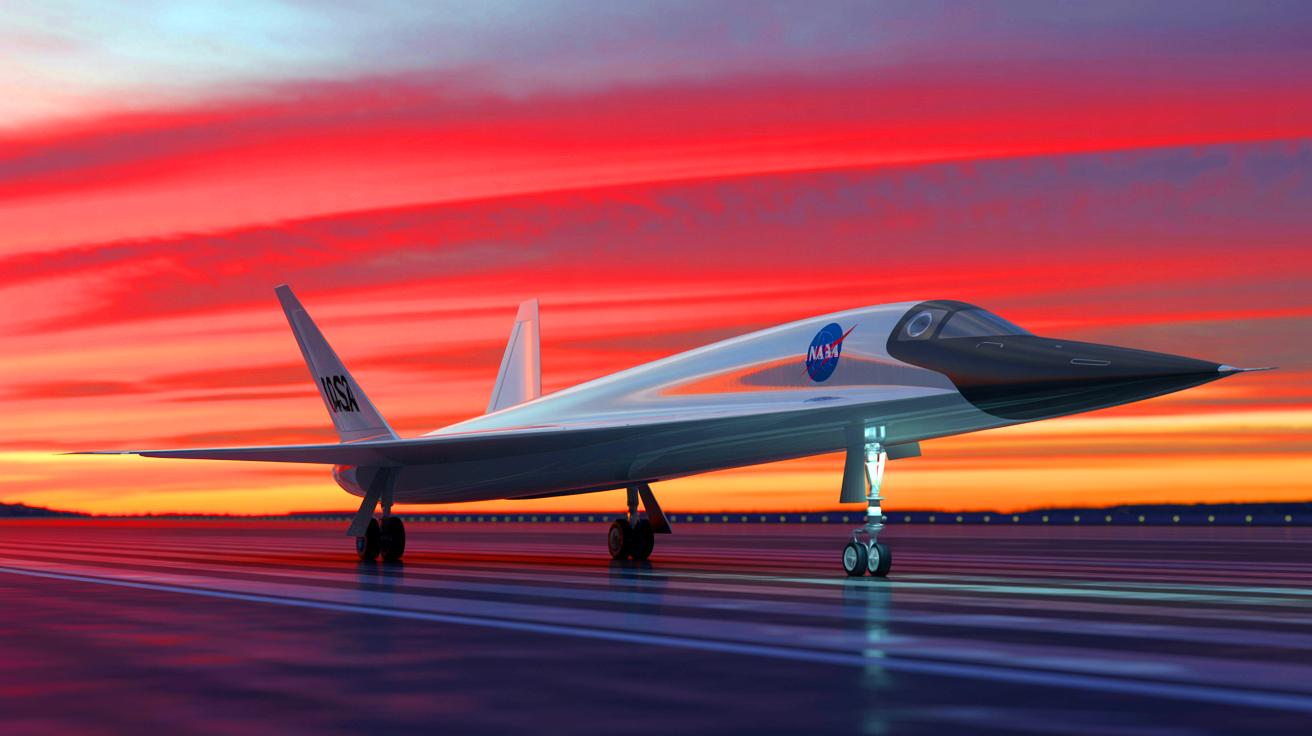- 🚀 The X-59 is designed to fly faster than sound without the disruptive sonic booms typical of supersonic flights.
- 🔍 Featuring an External Vision System (XVS), the aircraft uses augmented reality cameras instead of a traditional cockpit window.
- 🛠️ Recent low-speed taxi tests at Plant 42 ensure proper functioning of the jet’s steering and braking systems.
- 🌍 International collaboration with JAXA aims to refine the aircraft’s design and measure noise levels for quieter supersonic travel.
The unveiling of NASA’s X-59 “quiet” supersonic jet marks a significant milestone in aerospace innovation. Designed to fly faster than sound without the disruptive sonic booms, this groundbreaking aircraft is poised to revolutionize the future of air travel. With its unique design featuring an elongated body and augmented reality-enhanced vision system, the X-59 promises not only speed but also a new level of environmental consciousness in aviation. As it undergoes rigorous testing at the U.S. Air Force’s Plant 42 facility, excitement builds around the potential for a quieter supersonic experience. How will this affect the future of commercial aviation?
The Revolutionary Design of the X-59
The X-59 stands out with its radical design, aimed at eliminating the thunderous sonic booms typical of supersonic flights. Measuring 99 feet in length, this aircraft’s elongated shape is not just for aesthetics but serves a crucial purpose in reducing noise. Instead of a traditional cockpit window, the X-59 utilizes an External Vision System (XVS), providing pilots with a view through an augmented reality-enabled closed circuit camera. This combination of cutting-edge technology and innovative design is what allows the X-59 to promise a quieter supersonic experience.
Developed by Lockheed Martin at the renowned Skunk Works facility, the X-59 is part of NASA’s broader mission to transform supersonic travel. By minimizing noise pollution, the X-59 aims to address one of the biggest barriers to commercial supersonic flight. As testing progresses, the success of this design could pave the way for new regulations that allow supersonic flights over land, making rapid travel a reality for the masses.
Testing Milestones at Plant 42
Located in Palmdale, California, the U.S. Air Force’s Plant 42 has been the birthplace of many advanced aircraft. The X-59’s taxi tests at this facility mark a crucial step in its development. These tests, conducted at low speeds, ensure that the jet’s steering and braking systems are functioning correctly. The next phase involves high-speed taxi tests, where the X-59 will accelerate to speeds close to take-off velocity.
Plant 42 is synonymous with innovation, having been involved in the development of iconic aircraft like the F-22 Raptor and B-2 Spirit. The collaboration between NASA and Lockheed Martin continues this legacy, pushing the boundaries of what is possible in aerospace technology. As the X-59 undergoes these meticulous tests, each milestone brings us closer to witnessing the jet’s full capabilities in flight.
International Collaboration and Technological Advancements
In the pursuit of supersonic innovation, NASA’s collaboration with international partners plays a vital role. Recently, NASA teamed up with the Japan Aerospace Exploration Agency (JAXA) to test a scale model of the X-59 in a supersonic wind tunnel. This collaboration aims to measure the noise produced beneath the aircraft, providing valuable data to refine its design further.
Moreover, the X-59 has undergone various tests, including an “engine speed hold” and afterburner tests. These trials ensure the aircraft’s engine can maintain specific speeds and inject extra fuel into the exhaust for enhanced performance. These technological advancements are crucial in demonstrating the X-59’s potential to revolutionize supersonic travel, making it not only faster but also quieter and more efficient.
The Future of Supersonic Travel
The ultimate goal of the X-59 project is to bring supersonic flight back to the skies over the continental United States. By significantly reducing the impact of sonic booms, NASA aims to make supersonic travel feasible and acceptable for commercial use. If successful, the X-59 could drastically reduce flight times for civilian travel, disaster response, and medical transport.
This project represents a significant step towards a future where supersonic travel is not only possible but also sustainable. With its potential to transform the aviation industry, the X-59 stands as a testament to human ingenuity and the relentless pursuit of technological advancement. As NASA moves forward with its test flights, the world watches with anticipation for the dawn of a new era in aviation.
As the X-59 continues to make strides in its development, the excitement around its potential grows. The prospect of supersonic travel returning to commercial aviation is tantalizing, promising a future where flights are faster and more efficient. How will the advancements of the X-59 shape the future landscape of global travel and connectivity?
This article is based on verified sources and supported by editorial technologies.
Did you like it? 4.6/5 (29)
